Typical dark or light spots appear on the TV screen if the matrix, diffuser or backlight elements are damaged. Also, dark spots can appear as “broken” pixels – interestingly, a certain number of them are sometimes deliberately expected during assembly, and there is even a method for standardizing LCD screens by the number of expected “broken” pixels, from 0 to 50 per 1 million in the matrix …

Let’s take a look at exactly how such spots appear, how to handle the technique to avoid their appearance, and what to do if they do appear.
Contents
Why do spots appear on the screen?
The outer side of a modern LCD TV screen – a matrix – consists of layers of different types of polymer materials: several layers of a polarizer; glass or glass substitute; layers of material coated with liquid crystals; anti-reflective coating. Behind the matrix there are several more layers of similar plates – diffusers, behind which there are light sources.
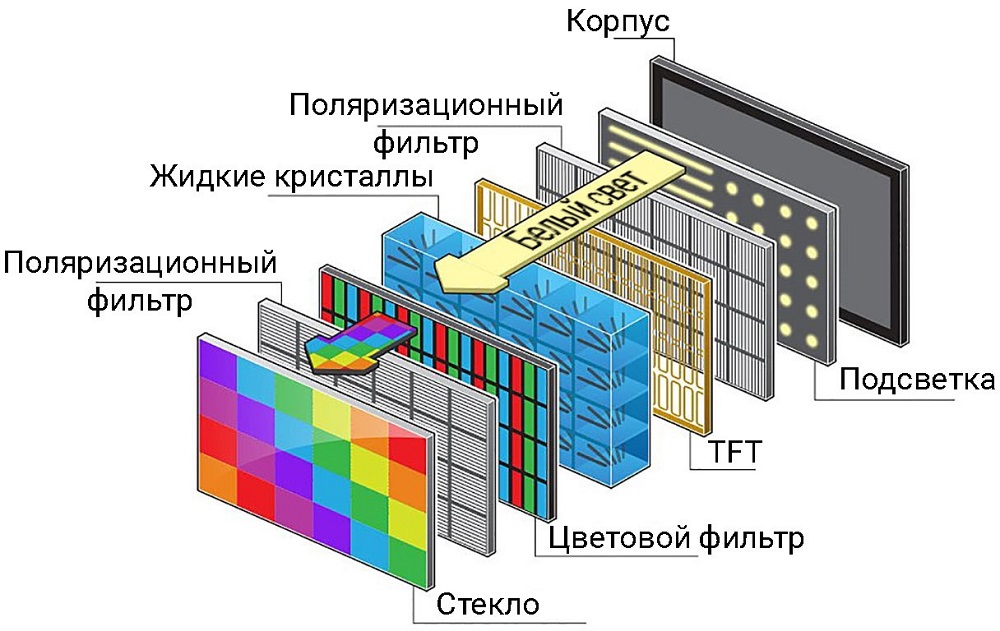
Let’s make a reservation that the article will consider cases in which a dark or light spot appeared on the screen of a recently “healthy” TV. If you just unpacked and installed the device, turned it on for the first time and already see a “dead” zone on the screen – run headlong back to the store and seek a replacement. Physical damage sustained during transportation and factory defects are “gray” areas of the law, but, as a rule, if you are sure that the damage was caused precisely by the fault of the store, insist on an expert examination: by default, it is carried out at the expense of the manufacturer.
“Defective pixels
Conventionally, this problem can be divided into two more subtypes: working pixels, showing the wrong color, and completely “dead”, black areas.
A completely black pixel that does not respond to touch (that is, is not another type of black spot, which we will discuss below) indicates that the transistor responsible for controlling this area of the screen has burned out. You will either have to put up with the black point, or carry the TV for repair. Find out if a repair is possible under warranty – chances are small, but dead pixels are unacceptable in high-end sensors. Unfortunately, there are surprisingly few of these on sale, but for the rest it is not a warranty case – at the same time, the matrix standard is often omitted in the TV specifications available to the consumer.
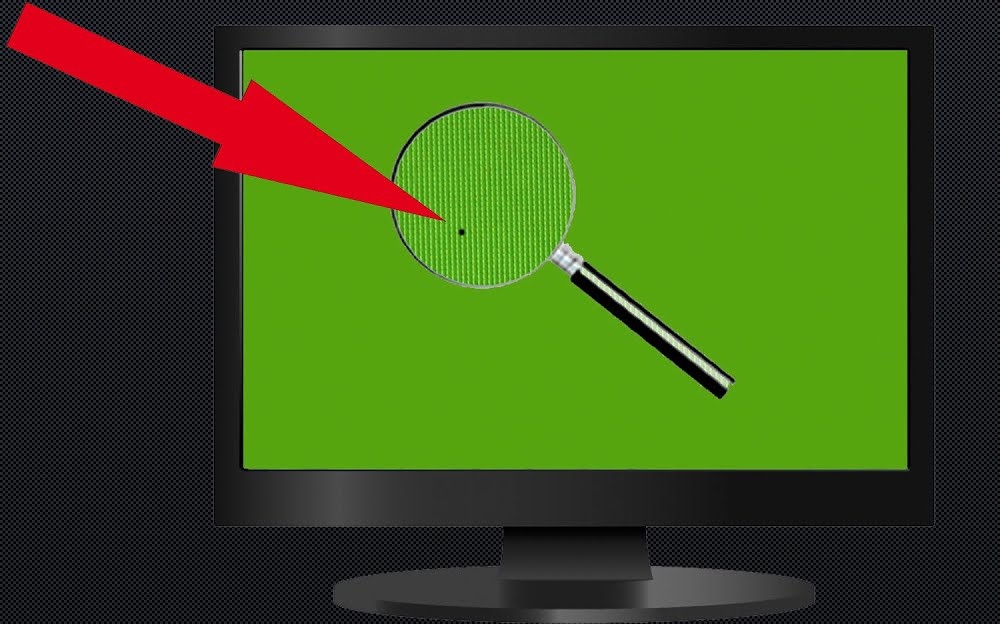
You can try to fix incorrectly colored (“stuck”) pixels yourself. The culprit is voltage fluctuations, as well as extreme (usually very high) temperatures, which can cause the liquid crystal to “freeze” in the wrong position. This becomes especially noticeable after a long time on the TV.
Unlike the previous defect, this type of “broken” pixel can in some way “infect” its environment – over time you will see that the problem spreads to neighboring pixels, and gradually it can turn into a rather noticeable strip along the screen.
The first thing to do is to reduce the temperature exposure. Do not cover the TV set with a heavy cloth, move it away from heating appliances, batteries and, if possible, from direct sunlight.
There are special utilities that can help you fix a malfunctioning pixel. The principle of their work is to run different colors through each pixel of the screen. As a rule, such programs run for many hours without stopping.
Occasionally, a “massage” of a dead pixel can help. Take note of the damaged spot on the screen, turn off the TV and for a minute or two, gently press with a dry cotton swab to where the frozen pixel is. Wait another 10-15 minutes, then turn on the TV and check the problem area – the frozen pixel may return to normal.
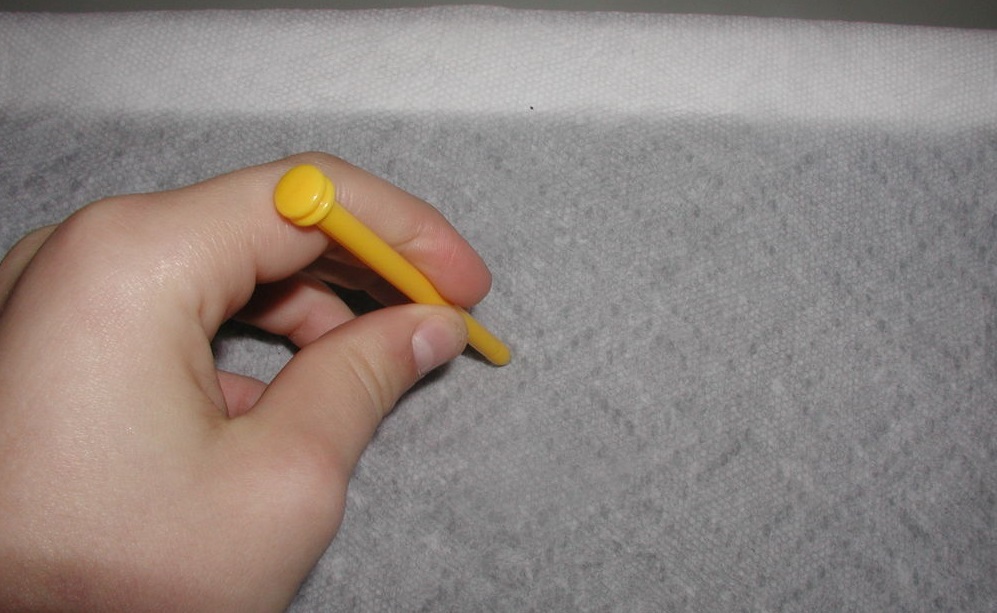
Most often, the option with cooling the device helps. Unplug the TV and place it in a cool, dry place for several hours – for example, you can clear a balcony on a winter night. Cooling forces the liquid crystals to solidify, rigidly aligning their orientation. Returning to normal temperature, they will return to their default state, free from spatial defects.
After being in the cold, streaks may be visible on the screen – let the device run for a few hours and they will disappear.
Sharp-edged black spots or black streaks that disappear with pressure
Such black spots on the TV screen can also look like a kind of “crack” after being hit or dropped from a height. Gently slide a clean finger over the damaged surface, applying a little pressure: a real crack will be embossed to the touch and will not disappear from the pressure. About why suddenly cracks appear on the screen and how they can be fixed, we have a separate material.
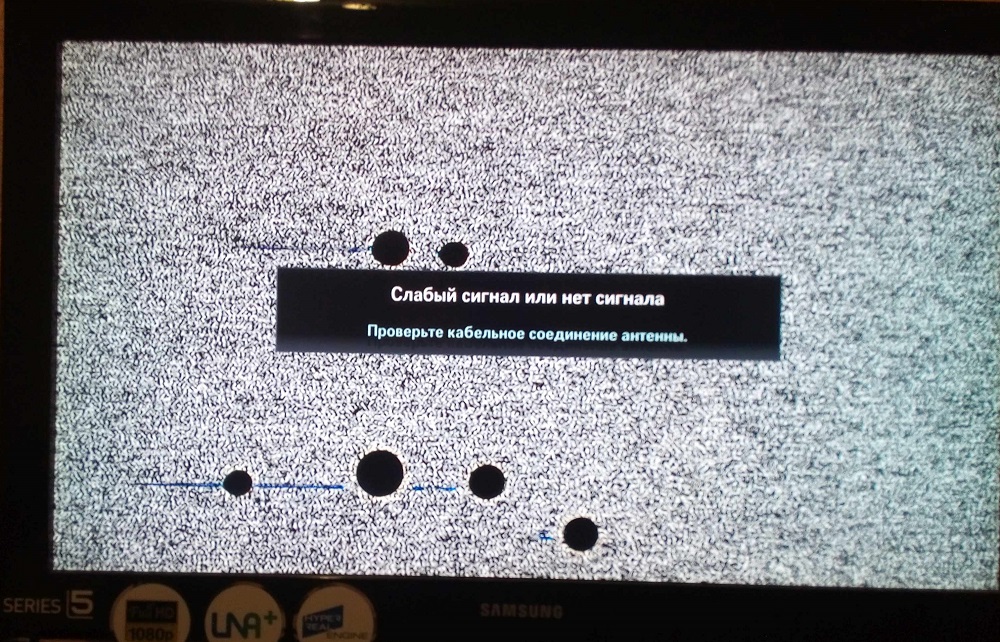
If the problem disappears when pressed and reappears, you just have to remove your hand, we are dealing with depressurization (stratification) of the matrix layers. This is due to the ingress of moisture and air into the matrix – and sometimes even a small speck of dust, accidentally caught between the layers, can provoke this.
Grayish spots with clear edges that do not cover the image (but are noticeable against its background) usually indicate a defect in the polarizer – if you carry out an examination, you can get a replacement screen under warranty.
Dark spots with blurred edges
Such spots usually appear around the perimeter of the screen and make the screen look like a billboard illuminated at night – the spots are cone-shaped, without clear edges and look like a “darkening” of a part of the screen. This is usually the case – this is a sign that a part of the backlight located behind the matrix is out of order.

Irregular dark spots with blurred edges appearing in the center of the screen may indicate a defect (or delamination) of the diffuser films.
Light spots with blurry edges
Such light spots on the TV screen often appear in several pieces at once, have the correct shape and look as if from the inside someone is shining a flashlight through the screen. As a rule, this means a defect (or delamination) of the diffuser or reflector film, or failure of the LED lenses. A defect usually manifests itself after a long TV operation or under the influence of heat.
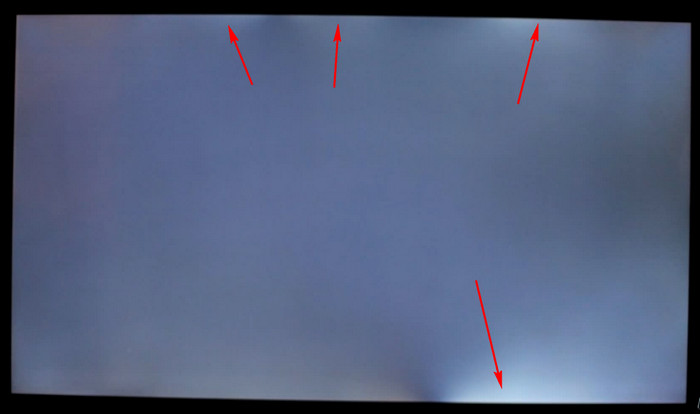
Blue or purple spots
A purple spot on the TV screen appears with a faulty LED – most likely, you will have to change the backlight panel. Usually, bright purple or blue light appears primarily at the corners of the screen.
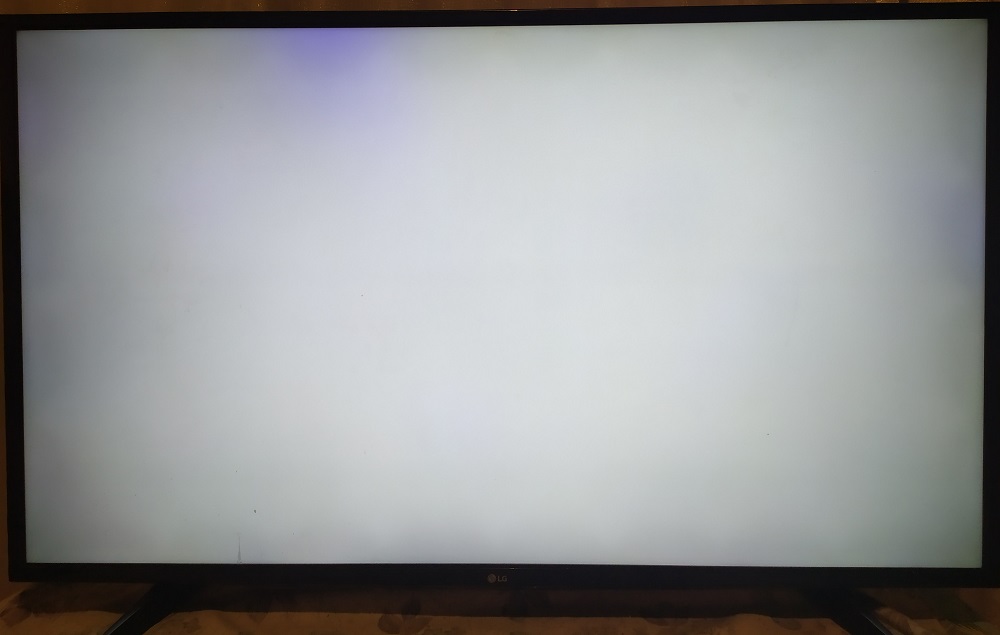
Light spots with clear edges
White spots on the TV screen, covering the image, indicate the matrix delamination – similar to the black ones, but the second polarizing film is already peeling off. One or more matrix connection loops may be faulty.
Multi-colored (rainbow) spots
Colored spots on the screen means that the main board of your TV is probably out of order. We’ll have to carry it to repair – fortunately, this board can be repaired relatively bloodlessly. In CRT TVs, such a defect usually means screen magnetization or a faulty posistor.
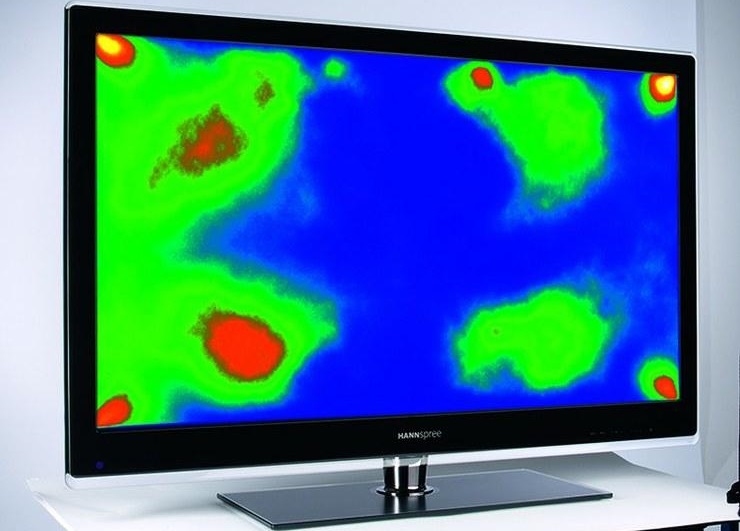
How to remove dark spots
In rare cases, a dark spot appearing on the LCD TV screen from matrix delamination can disappear on its own: the polarizer film may over time begin to adjoin the rest of the matrix layers. But usually everything happens exactly the opposite: a small area where air or water got into strains the rest of the film, eventually causing it to further peel off and increase the stain.
In theory, the matrix can be layered and reassembled by removing air bubbles, dust or wet spots. In practice, with such a task, you will have to contact specialized workshops, better, of course, branded ones: a Samsung TV malfunction will be fixed faster in a Samsung workshop, and stains on an LG screen will be dealt with better in a workshop in LG. Better yet, buy and install a new matrix.
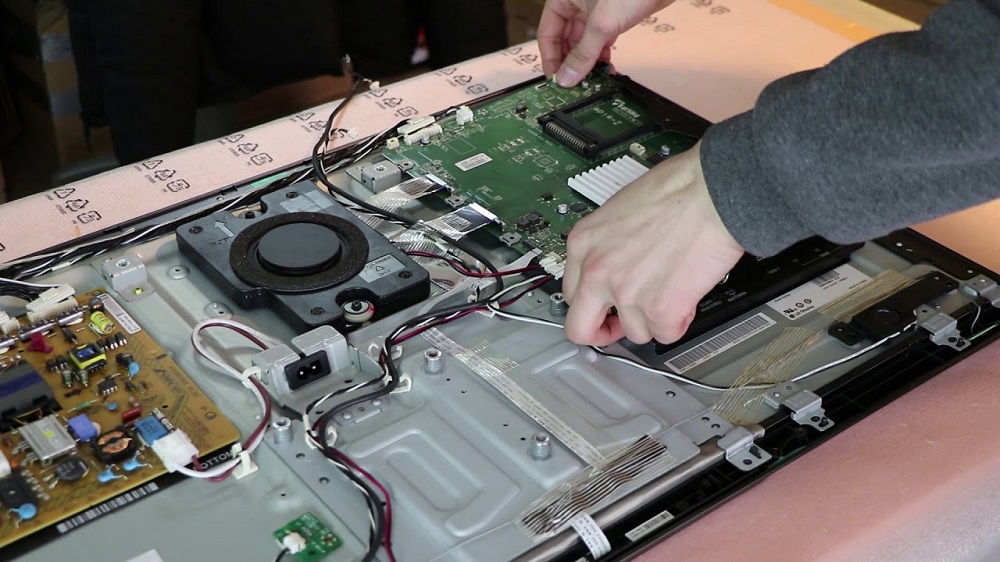
Dark spots on a plasma TV can also indicate a problem with the imager.
Removing light spots
If the spots have blurry edges, reduce the brightness of the screen – this will prolong its life, but the backlight will still have to be changed sooner or later. You can try to eliminate light “broken” pixels using the method described in the corresponding section. A light spot on a TV screen with a stratified matrix is essentially similar to a black one – the problem is solved by disassembling and assembling the matrix or replacing it.
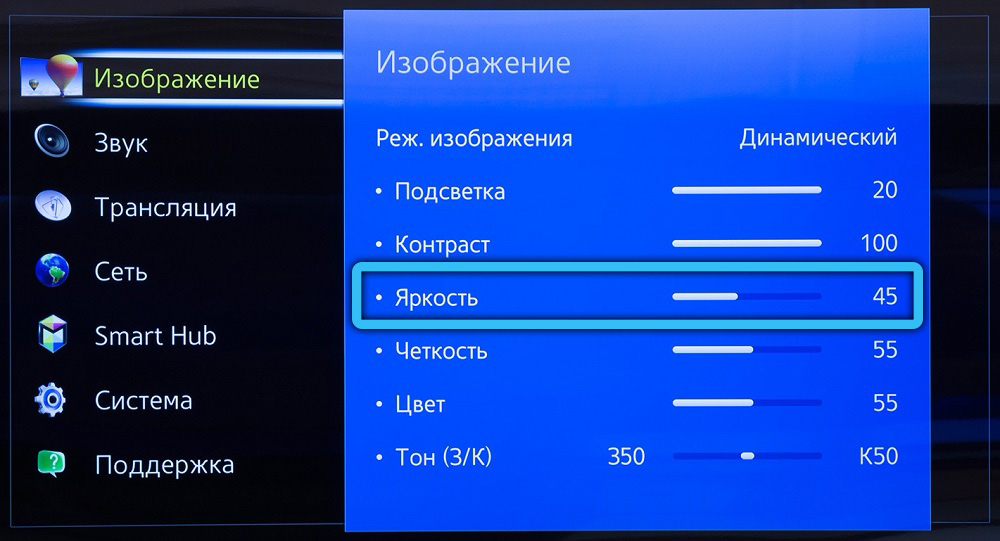
When a screen replacement is needed
You can fix problems with incorrectly working pixels and, in extremely rare cases, with depressurization of the screen, on your own. All other types of spots on the screen, in practice, unfortunately, mean replacing the matrix or backlight.
We hope this article helped you at least identify the cause of your TV screen breakdown. Maybe you succeeded and “revive” the incorrectly working pixels? Ask your questions – we will be happy to answer your comments.